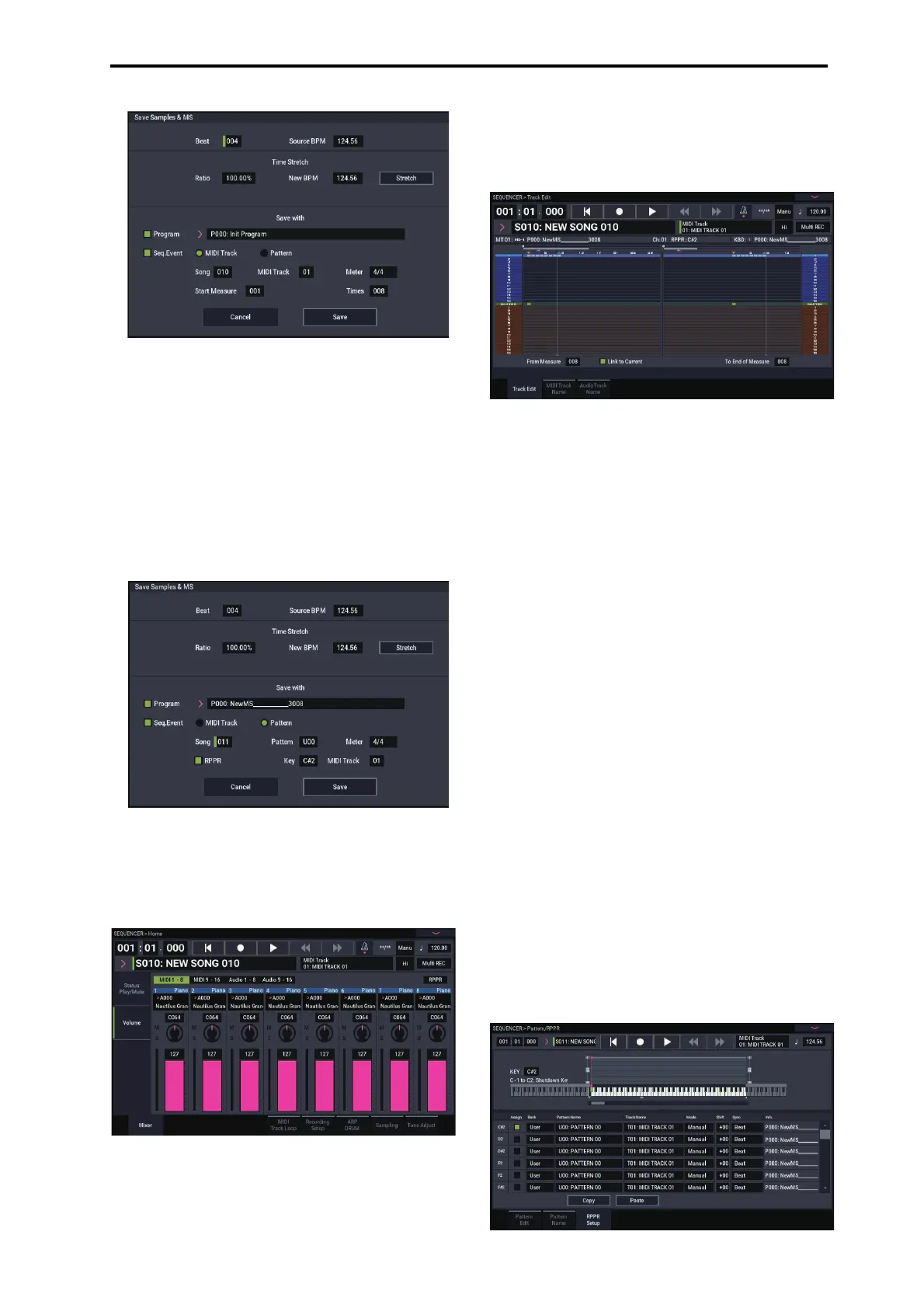Sampling and editing in SAMPLING mode Using Time Slice
141
Press the Save button to save the data.
You will return to the dialog box of step 4.
• If you want to create the performance data in a pattern:
In order to audition the performance data as it would be if
created as a pattern, press the Save button once again to
go to the Save Samples & MS dialog box.
Turn Program and Seq.Event On (checked)
Program: as desired (for instance, G001)
Pattern: On
Song: 011, Pattern: U00, Meter: 4/4
RPPR: On (checked), Key: C#2, Track: 01
Press the Save button to save the data.
You will return to the dialog box of step 4.
6. Press the EXIT button.
7. Press the MODE button to select SEQUENCER
mode, and select S000 for “Song Select.”
The following song data has been set/created
automatically as you specified in step 5.
• Home page
Song: 010, Meter: 4/4, Tempo: 112
• Home– Mixer page
Track01 Program: as desired (for instance, P000)
• Track Edit, Track Edit page
Track01: track data: 8 measures (D2–)
Press the SEQUENCER START/STOP button to start
playback.
As an example, set “ (Tempo)” to 100. Notice that the
pitch does not change when you play back at a different
tempo.
If the beat of the original rhythm loop sample is not
reproduced correctly when you change the tempo, or if
obtrusive noise is heard, this is because the sample was
not sliced appropriately in step 4. The way in which the
percussion instrument sounds were divided will have a
major impact on the quality of the playback when the
tempo is changed. You will need to adjust the way in
which the samples are divided in step 4.
The silence between samples may become obtrusive if
you play back at a slower tempo, or noise may occur
between samples if you play back at a faster tempo. To
avoid such problems, you can set Stretch “New BPM” or
“Ratio” in step 5 to the tempo at which you want to play
back, and execute time stretch to adjust the length of each
sample. For more information, see “Time Stretch” on
page 625 of the PG.
8. In “Song Select,” choose 001.
The following song data has been set/created
automatically as you specified in step 5.
• Home page
Song: 001, Meter: 4/4, Tempo: 112, RPPR: On
• Home– Mixer page
Track01 Program: as desired (for instance, G001)
• Pattern/RPPR, RPPR Setup page
Key: C#2, Assign: On,
Pattern
:
User, U00, Track: Track01
Pattern data: 1 measure (D2–)

